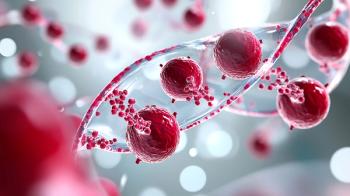
- January/February 2015
- Volume 6
- Issue 1
Hemolytic Anemia May Develop After High-Dose IVIG Treatment
The development of hemolytic anemia was found to be a side effect of treatment with high doses of IVIG in a study published online in December 2014 in Neurology, Neuroimmunology & Neuroinflammation.
The study involved a retrospective analysis of 4 patients with Guillain-Barré syndrome (GBS) and 1 patient with Miller Fisher syndrome (MFS) who were treated from 2012 to 2013. All patients received a total dose of at least 4 g/kg IVIG, which is the equivalent of 2 standard treatment courses administered in less than 2 weeks.
None of the GBS patients responded initially, which prompted a second course of treatment, while the MFS patient inadvertently received a high dose.
All the GBS patients with non-O blood types (3/5) developed clinically significant anemia that required a blood transfusion. The other 2 patients with O blood type developed mild and clinically asymptomatic anemia. There were no other medical comorbidities reported and none of the patients were taking other medications that are commonly linked to the development of autoimmune hemolytic anemia.
Two of the 3 patients who developed hemolytic anemia experienced full neurologic recovery. In addition, the patients with O blood type did not have evidence of hemolysis.
“We propose that risk of IVIG-related HA is increased with high doses, significant in non-O blood types, and more likely to occur when administered over a short interval (ie, <2 weeks),” the study authors concluded. SPT
Articles in this issue
almost 11 years ago
Managing Care and Costs for Orphan Conditionsalmost 11 years ago
Alternative to IVIG Reduces Antibodies in Kidney Patientsalmost 11 years ago
Viekira Pak by AbbVie Incalmost 11 years ago
Passive Antibody Transfer May Occur Following IVIG Transfusionalmost 11 years ago
HIV Less Virulent Due to Widespread Access to ARTalmost 11 years ago
Attacking HIV Through Protective Capsulealmost 11 years ago
HIV Drugs May Cause Long-Term Damage to Fetal Heartsalmost 11 years ago
Specialty Drugs: Year in Review 2014almost 11 years ago
Diplomat Sets the Standard for Independent Specialty PharmaciesNewsletter
Stay informed on drug updates, treatment guidelines, and pharmacy practice trends—subscribe to Pharmacy Times for weekly clinical insights.













































































































































































































